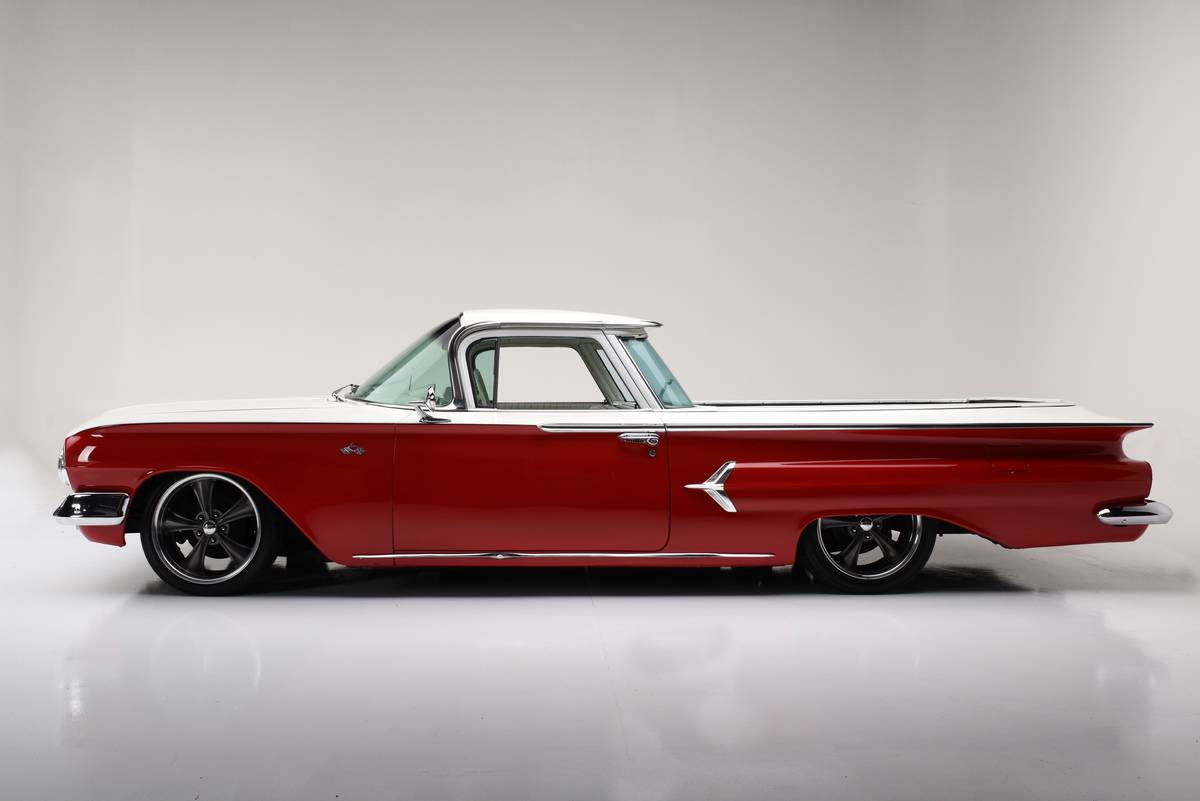
Past builders: automakers are history
Content
- Studebaker
- Packard
- desoto
- Edsel
- Duesenberg
- Piers Arrow
- Saab
- Iso Autoveikoli Spa
- Austin-Healey
- The room
- Markos Engineering LLC
- Nash Motors
- Pegasus
- Talbot-Lake
- Chemisette
- Triumph Motor Company
- Willys-Overland Motors
- Oldsmobile
- Stanley Motor Carriage Company
- Aerocar International
- B.S. Cunningham Company
- Excalibur
- Offspring
- Autobianchi
- mercury
- Panhard
- Plymouth
- Saturn
- Double Gia
- Corporation Checker Motors
- American Motors Corporation
- buzzer
- Pirate
- Delorean Motor Company
- Mosler
- Amphicar
- Askari Kars LLC.
- Cars Cars
- Cisitalia
- Pontiac
Building a car is hard. Creating a lot of cars that people will want to give you money for is even more difficult. Ever since the automobile came along, hundreds of automakers have been founded that have made cars and gone bust. Some of these builders were just brilliant, while others had machines that were too "out of the box", too ahead of their time, or just plain awful; like a 1988 Pontiac LeMans that is unlikely to ever become a collector's item.
Despite the reasons for failure, some manufacturers shone brightly, and their cars remain today a legacy of style, innovation and performance. Here are former builders who have made some incredible cars.
Studebaker
Studebaker, as a company, traces its origins back to 1852. Between 1852 and 1902, the company was far more famous for its horse-drawn carriages, buggies, and wagons than for anything related to early automobiles.

In 1902, the company produced its first car, an electric car, and in 1904, the first car with a gasoline engine. Made in South Bend, Indiana, Studebaker cars were known for their style, comfort and superior build quality. Some of the most popular Studebaker cars to collect are the Avanti, Golden Hawk and Speedster.
Packard
Packard Motor Car Company is known worldwide for its luxury and ultra-luxury vehicles. Created in Detroit, the brand successfully competed with European manufacturers such as Rolls-Royce and Mercedes-Benz. Founded in 1899, the company was highly respected for creating luxurious and reliable cars. Packard also has a reputation for being an innovator and was the first car with a V12 engine, air conditioning and the first modern steering wheel.
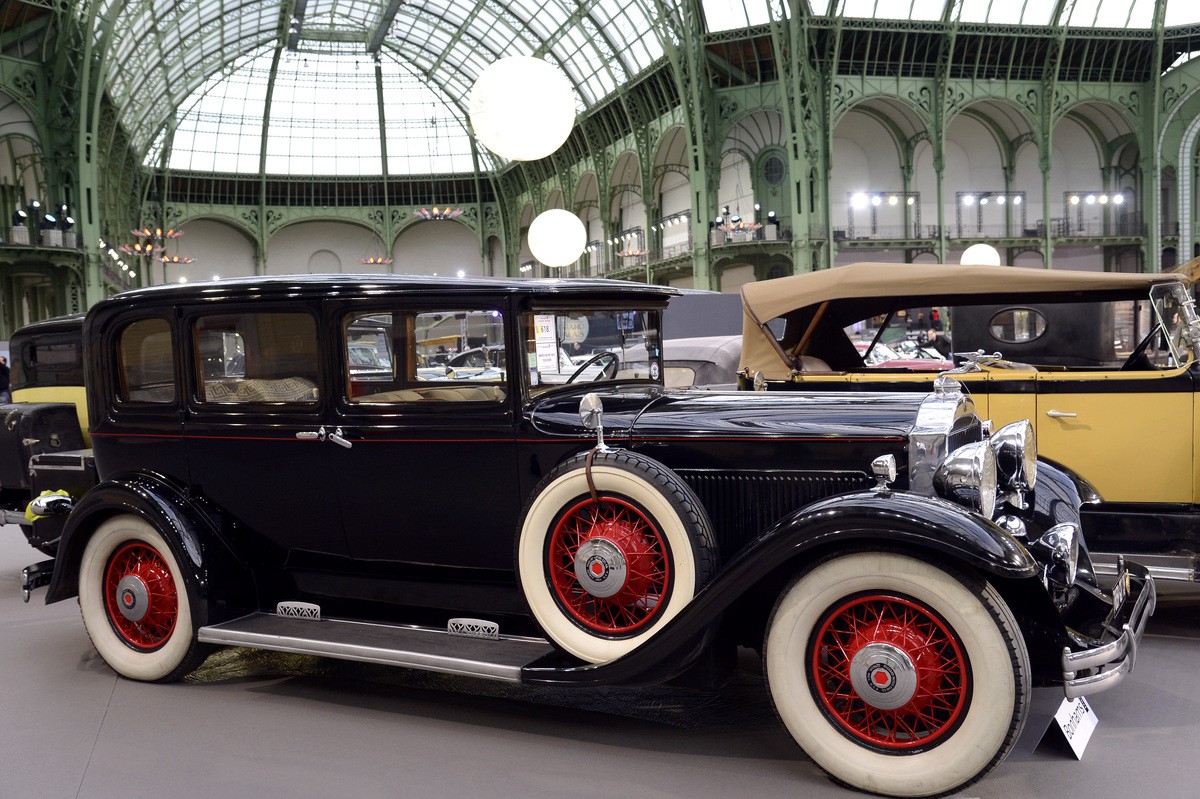
Packards was the epitome of American design and craftsmanship at its finest. In 1954, Packard merged with Studebaker to remain competitive with Ford and GM. Unfortunately, this ended badly for Packard and the last car was produced in 1959.
desoto
DeSoto was a brand founded and owned by the Chrysler Corporation in 1928. Named after Spanish explorer Hernando de Soto, the brand was meant to compete with Oldsmobile, Studebaker and Hudson as a mid-price brand.
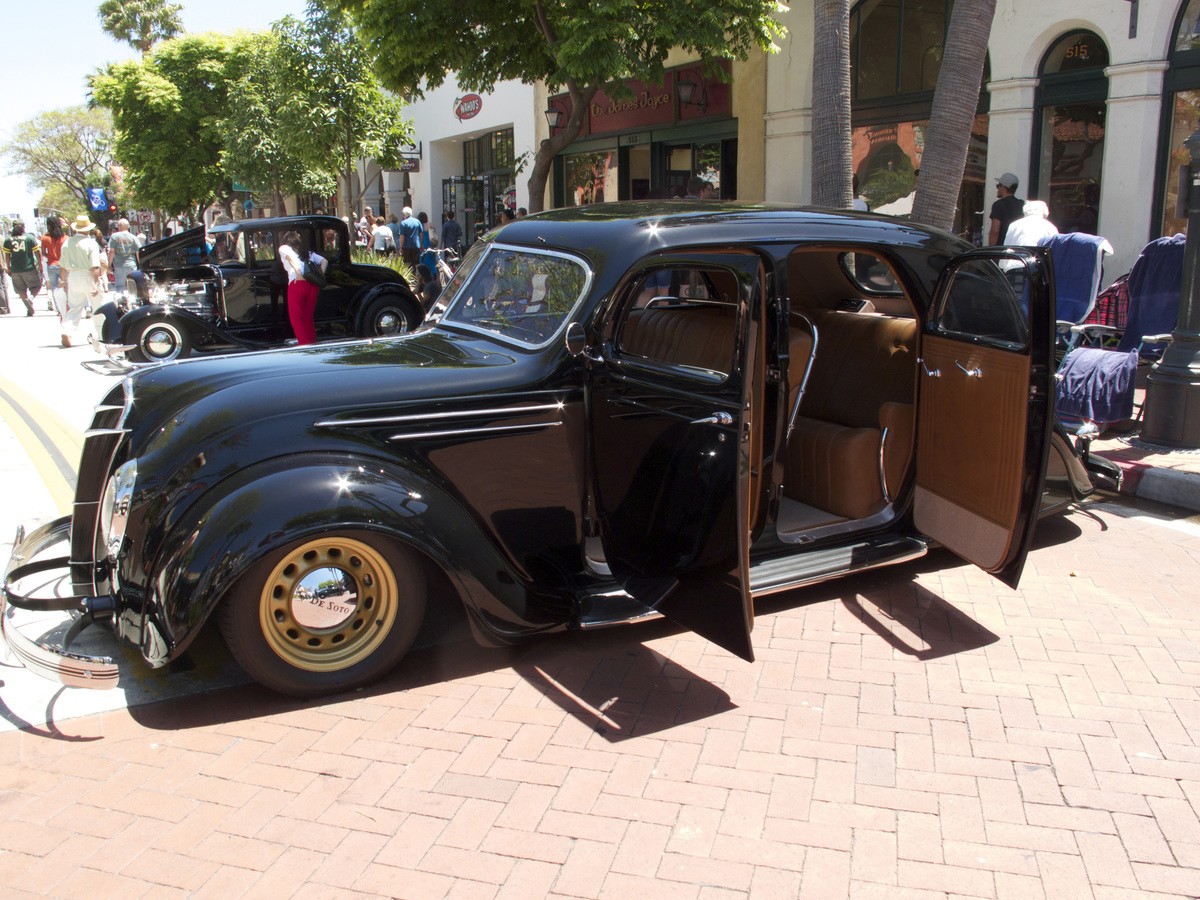
At one time, DeSoto cars had some unique features. From 1934 to 1936, the company offered the Airflow, a streamlined coupe and sedan that was decades ahead of its time in terms of automotive aerodynamics. DeSoto was also the first automobile company to offer electronic fuel injection (EFI) on its vehicles in 1958. This technology proved to be more efficient than mechanical fuel injection and paved the way for the electronically controlled cars we drive today.
Next up will be the failed offshoot of Ford!
Edsel
The Edsel car company lasted only 3 short years, from 1956 to 1959. The Ford subsidiary was billed as the "car of the future" and promised to offer customers an upscale, stylish lifestyle. Unfortunately, the cars didn't live up to the hype, and when they debuted, they were considered ugly and too expensive.
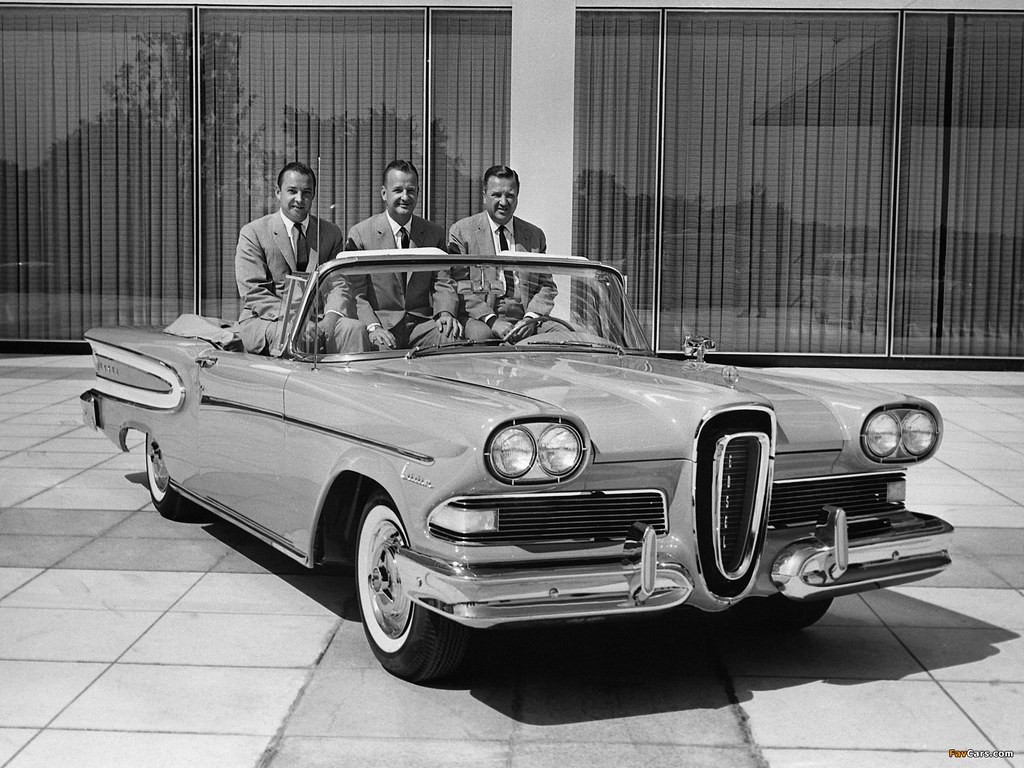
The company is named after Henry Ford's son Edsel Ford. When the company closed in 1960, it was a picture of corporate collapse. The Edsel seems to have the last laugh, as the short production cycle and low production volume of the cars make them very valuable in the collectors' market.
Duesenberg
Duesenberg Motors was founded in Saint Paul, Minnesota in 1913. Initially, the company produced engines and racing cars that won the Indianapolis 500 three times. All cars were hand-built and earned an impeccable reputation for the highest build quality and luxury.

Duesenberg's philosophy in the automotive industry consisted of three parts: it had to be fast, it had to be big, and it had to be luxurious. They competed with Rolls-Royce, Mercedes-Benz and Hispano-Suiza. The Duesenbergs were regularly ridden by rich, powerful people and Hollywood movie stars. The rarest and most valuable American car ever made is the 1935 Duesenberg SSJ. Only two 400 horsepower cars were made and they were owned by Clark Gable and Gary Cooper.
Piers Arrow
Luxury car manufacturer Pierce-Arrow traces its history back to 1865, but didn't make its first car until 1901. By 1904, the company was firmly established in the production of luxurious high-end cars for wealthy clients, including US presidents. In 1909, President Taft ordered two Pierce-Arrows to be used for official government business, making them the first "official" White House vehicles.
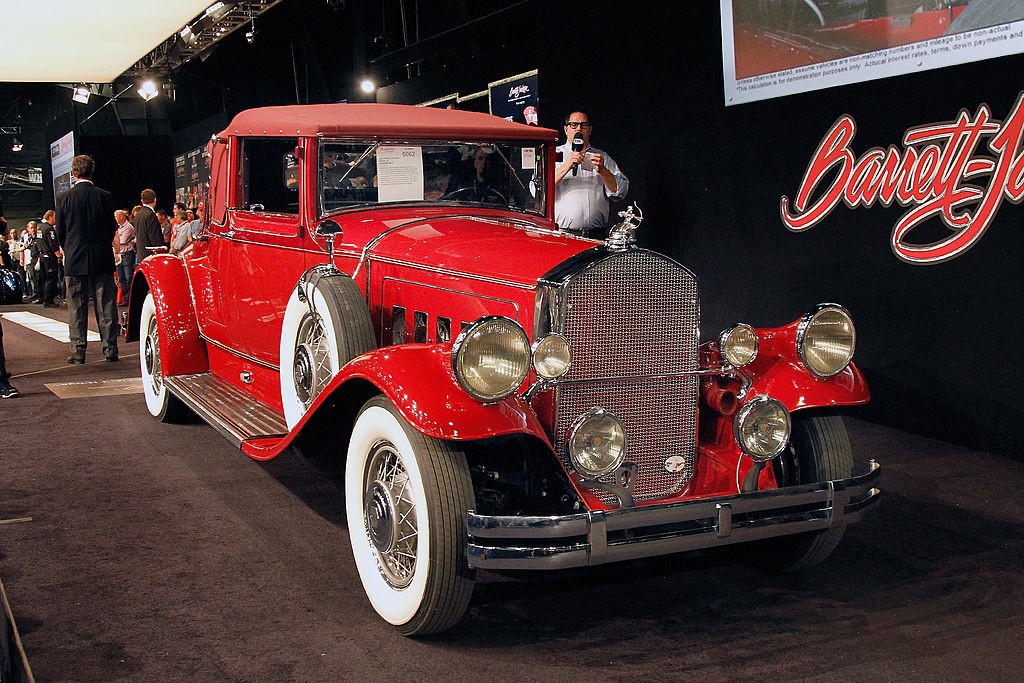
There is no substitute for displacement, and early Pierce-Arrows used either a 11.7-liter or 13.5-liter engine to get important people between destinations with ease. The last car was the 1933 Silver Arrow, an incredibly stylish sedan of which only five were built.
Saab
It's hard not to love the quirky and quirky Swedish car manufacturer Saab - their unique and innovative approach to cars has advanced quite a few safety features and advanced technologies. Their design and cars will never be confused with anything on the road.
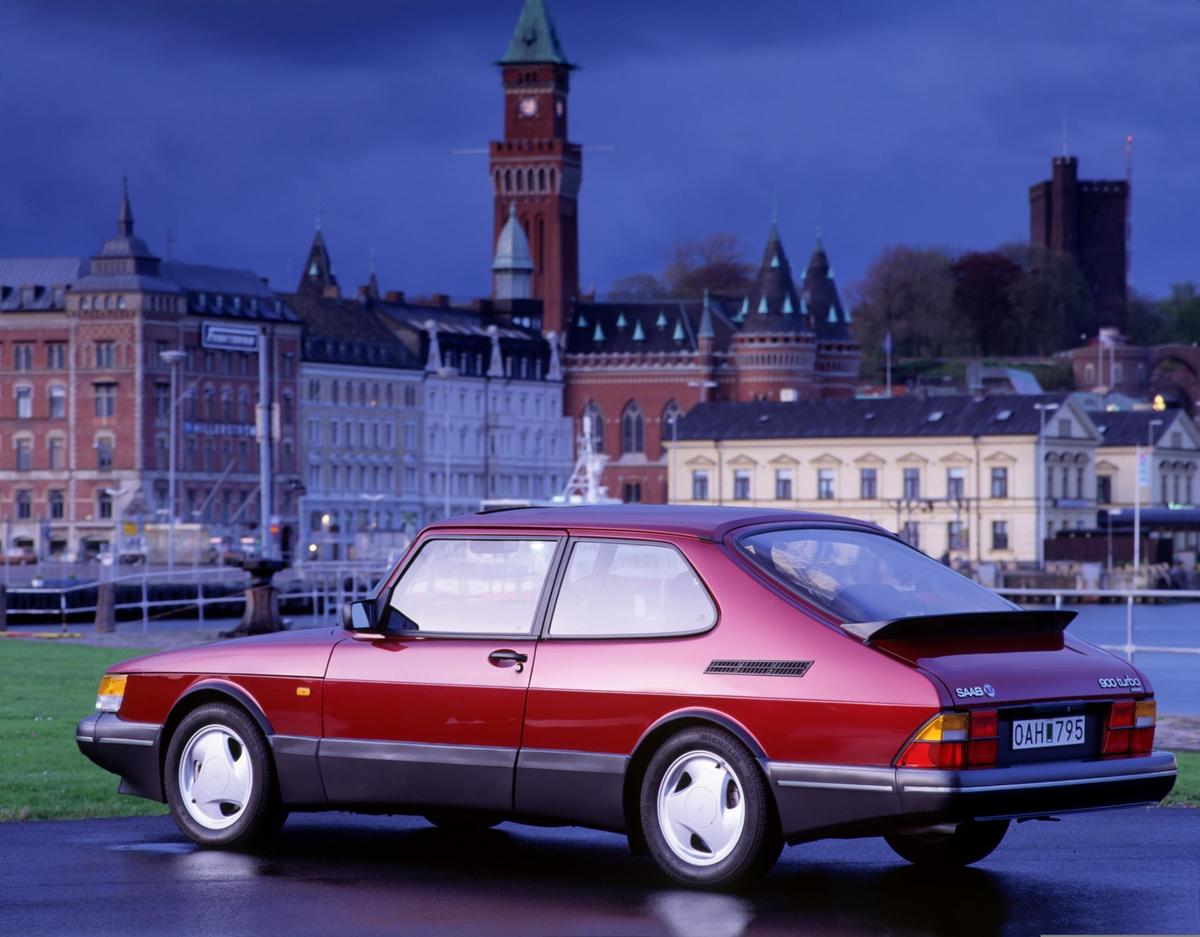
Saab AB was founded in 1937 as an aviation and defense company, and the automotive part of the company began in 1945. Cars have always taken inspiration from the company's aircraft, but Saab is better known for its unique choice of engines, including 2. piston V4 engines, their early introduction of turbocharging in the 1970s. Unfortunately, Saab closed down in 2012.
The Italian automaker that used Chevy engines is right ahead!
Iso Autoveikoli Spa
Iso Autoveicoli, also known as Iso Motors or simply "Iso", was an Italian automaker that produced cars and motorcycles starting in 1953. built by Bertone. It doesn't get much better than this!

The incredible 7 Iso Grifo 1968 litri was powered by a Chevrolet 427 Tri-Power V8 engine with 435 horsepower and a top speed of 186 mph. Surprisingly, the most successful car built by Iso was a microcar called the Isetta. Iso designed and developed the tiny bubble car and licensed the car to other manufacturers.
Austin-Healey
The famous British sports car manufacturer Austin-Healey was founded in 1952 as a joint venture between Austin, a subsidiary of the British Motor Company, and Don Healey Motor Company. A year later, in 1953, the company produced its first sports car, the BN1 Austin-Healey 100.
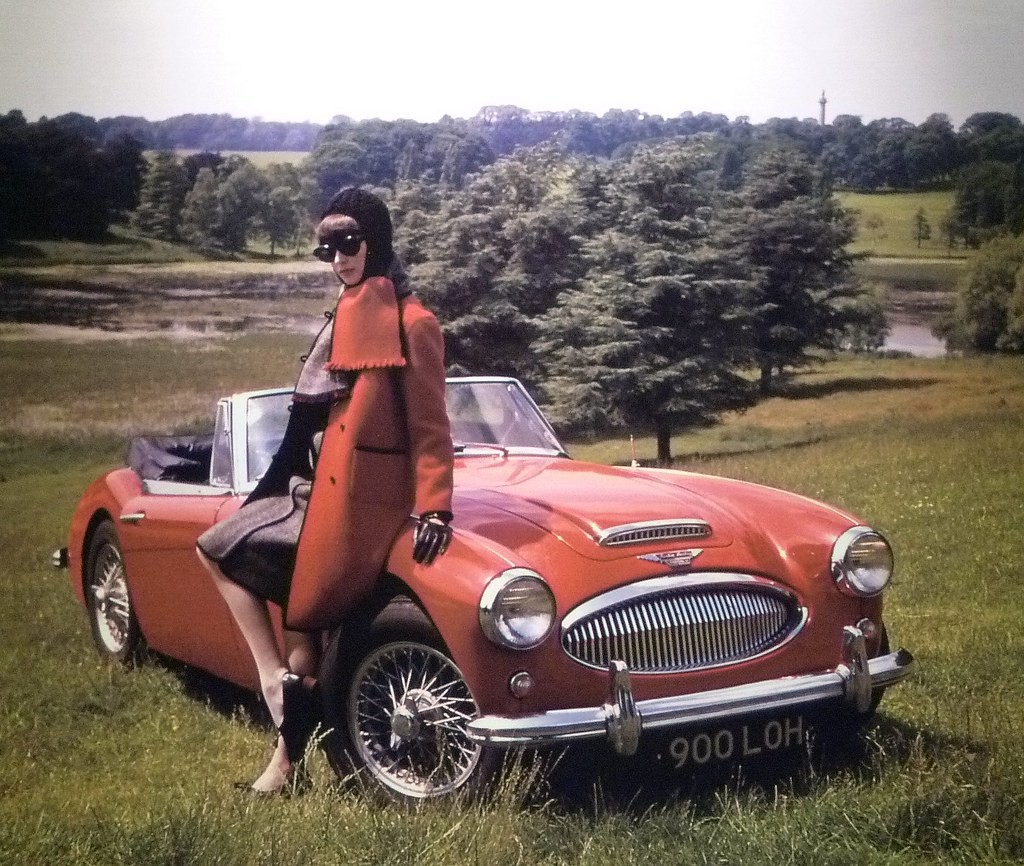
Power came from a 90 horsepower four-cylinder engine and was good enough to propel the svelte roadster to a top speed of 106 mph. Motorsport is where Austin-Healey sports cars really shine, and the marque has been successful all over the world and even set several Bonneville land speed records. The "big" Healey, the Model 3000, is Austin-Healey's most iconic sports car and is today highly regarded as one of the greatest British sports cars.
The room
LaSalle was a division of General Motors that was founded in 1927 to position itself in the marketplace between the premium Cadillacs and Buicks. LaSalle cars were luxurious, comfortable, and stylish, but noticeably more affordable than their Cadillac counterparts. Like Cadillac, the LaSalle is also named after a famous French explorer, and early cars also borrowed styling from European cars.

LaSalle's offerings were well thought out, well received, and gave GM a near-luxury vehicle to add to their portfolio. Perhaps LaSalle's biggest claim to fame is that it was legendary car designer Harley Earl's big break. He designed the very first LaSalle and spent 30 years at GM, eventually overseeing all of the company's design work.
Markos Engineering LLC
Marcos Engineering was founded in North Wales in 1958 by Jem Marsh and Frank Costin. The name Marcos comes from the first three letters of each of their last names. The first cars had laminated marine plywood chassis, gullwing doors and were designed specifically for racing. The cars were light, strong, fast and raced by future F1 legend Sir Jackie Stewart, Jackie Oliver and Le Mans great Derek Bell.
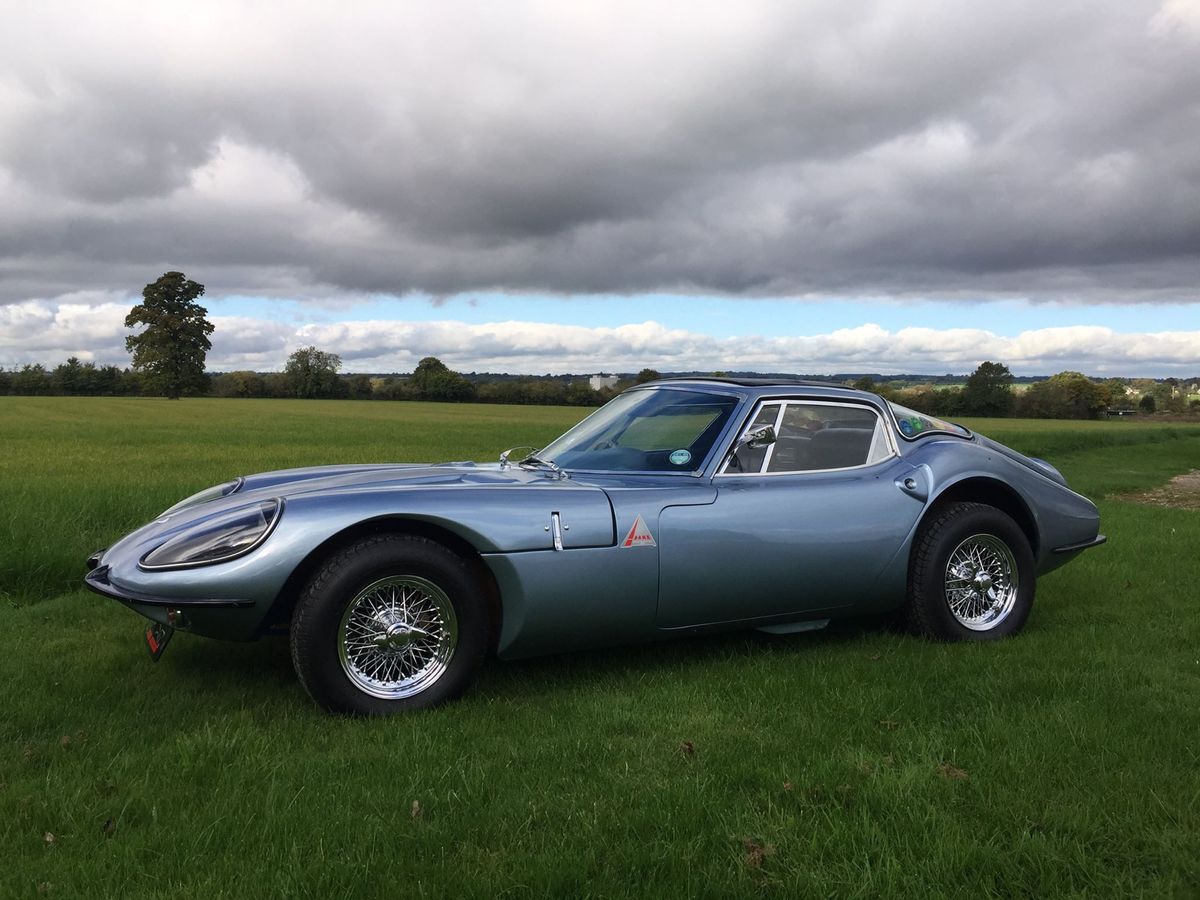
Marcos remained a niche manufacturer until 2007 when the cars proved to be fast and extremely competitive in sports car racing but never achieved the road success that allowed the company to remain profitable.
Wisconsin original next!
Nash Motors
Nash Motors was founded in 1916 in Kenosha, Wisconsin to bring innovation and technology to the low-cost car market. Nash would pioneer low-cost one-piece car designs, modern heating and ventilation systems, compact cars, and seat belts.
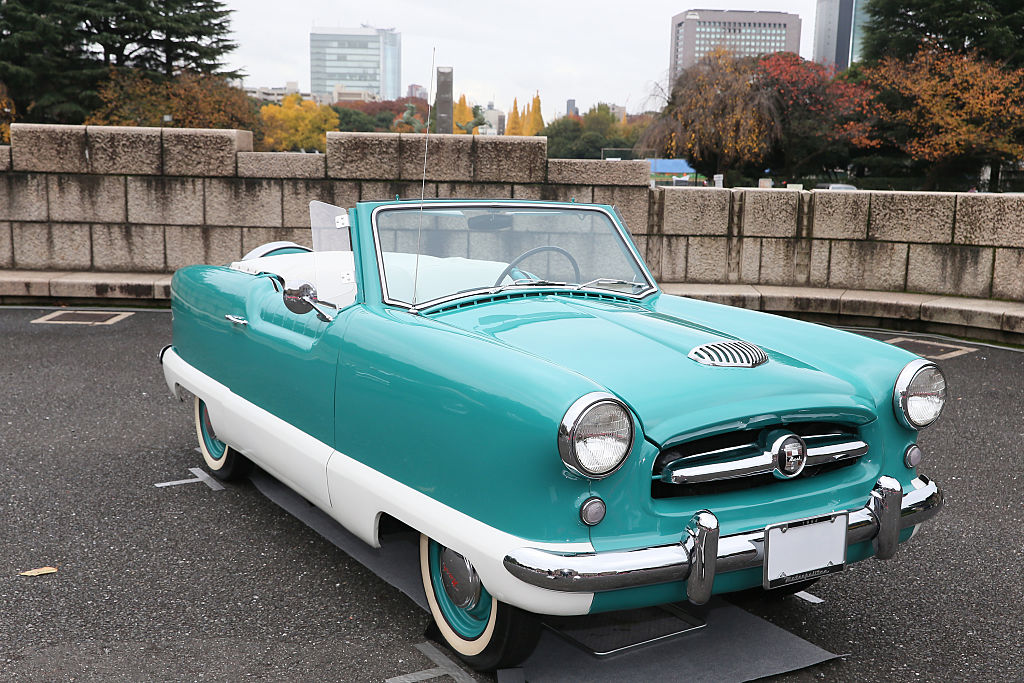
Nash survived as a separate company until 1954, when it merged with Hudson to form American Motors (AMC). One of Nash's most famous creations was the Metropolitan car. It was an economical subcompact car that debuted in 1953, when most American automakers believed in the "bigger is better" philosophy. The diminutive Metropolitan was built in Europe exclusively for the American market.
Pegasus
The Spanish manufacturer Pegaso began manufacturing trucks, tractors and military equipment in 1946, but expanded in 102 with the impressive Z-1951 sports car. Production ran from 1951 to 1958, with a total of 84 cars produced in many special variants.
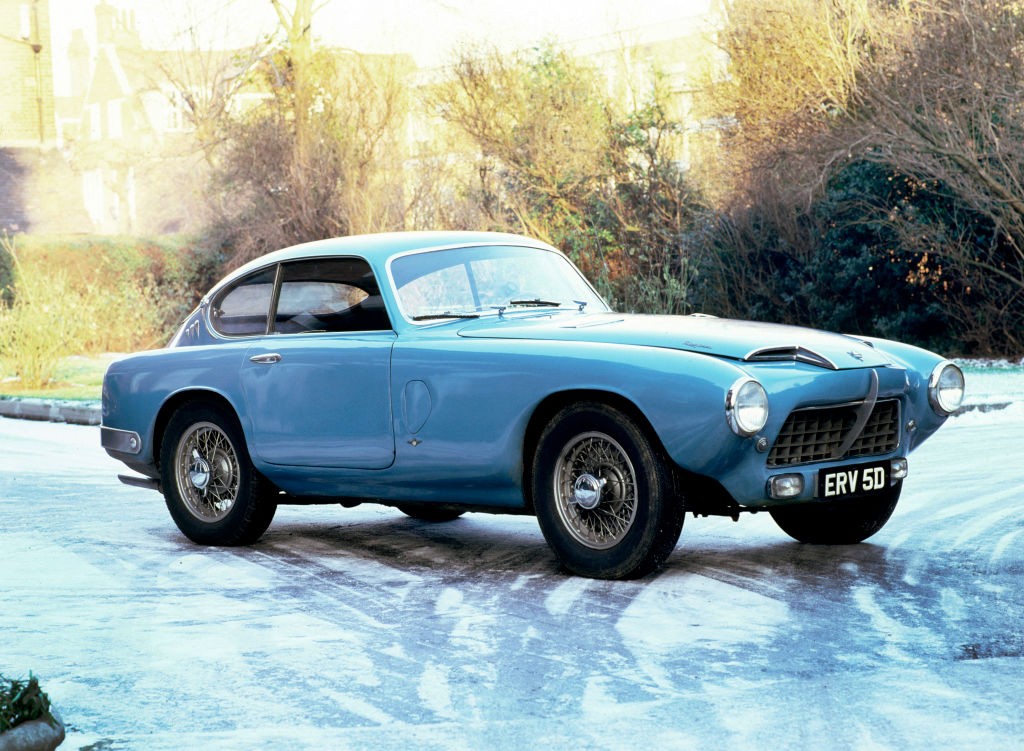
The Z-102 was available with a range of engines ranging from 175 to 360 horsepower. In 1953, the supercharged 102-litre Z-2.8 broke the mileage record by accelerating to an average speed of 151 mph. This was enough to make it the fastest production car in the world at the time. Pegaso, as a company, continued to manufacture trucks, buses and military vehicles until its closure in 1994.
Talbot-Lake
The founding of the Talbot-Lago car company is long, convoluted, and complicated, but that doesn't matter. The era most associated with the company's greatness begins when Antonio Lago takes over the Talbot car company in 1936. Following the exercise of the buyout option, Antonio Lago reorganizes Talbot to form Talbot-Lago, an automotive company specializing in racing and ultra-luxury vehicles. for some of the richest clients in the world.
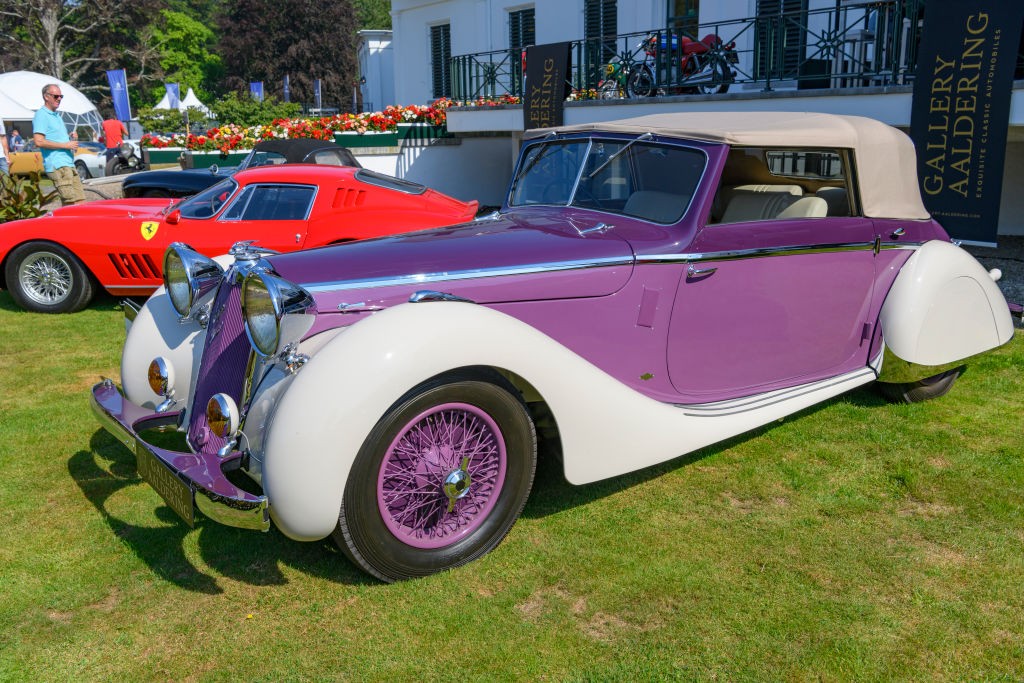
The cars continued to race at Le Mans and across Europe, gaining a Bugatti-like reputation for well-built, luxurious, hand-built performance cars. The most famous car is undoubtedly the T-1937-S, 150 model year.
Chemisette
There are several cars and several automakers that have a history that can match Tucker's. Preston Tucker started working on a completely new and innovative car in 1946. The idea was to revolutionize car design, but the company and the man in charge, Preston Tucker, were embroiled in conspiracy theories, U.S. Securities and Exchange Commission investigations, and endless press debate. and public.
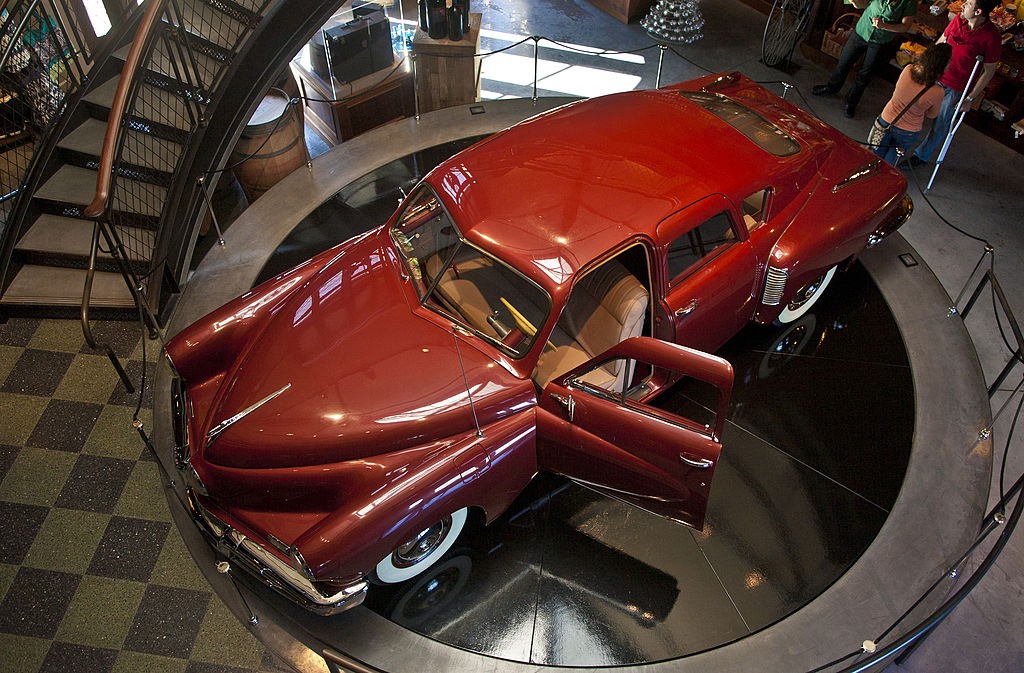
The car that was produced, the Tucker 48, was a real car. Powered by a modified helicopter engine, the 5.4-liter flat-six produced 160 horsepower with a monstrous 372 lb-ft of torque. This engine was at the rear of the car, which made the 48 rear engine and rear wheel drive.
Triumph Motor Company
Triumph's origins date back to 1885 when Siegfried Bettmann began importing bicycles from Europe and selling them in London under the name "Triumph". The first Triumph bicycle was produced in 1889 and the first motorcycle in 1902. It wasn't until 1923 that the first Triumph car, the 10/20, was sold.
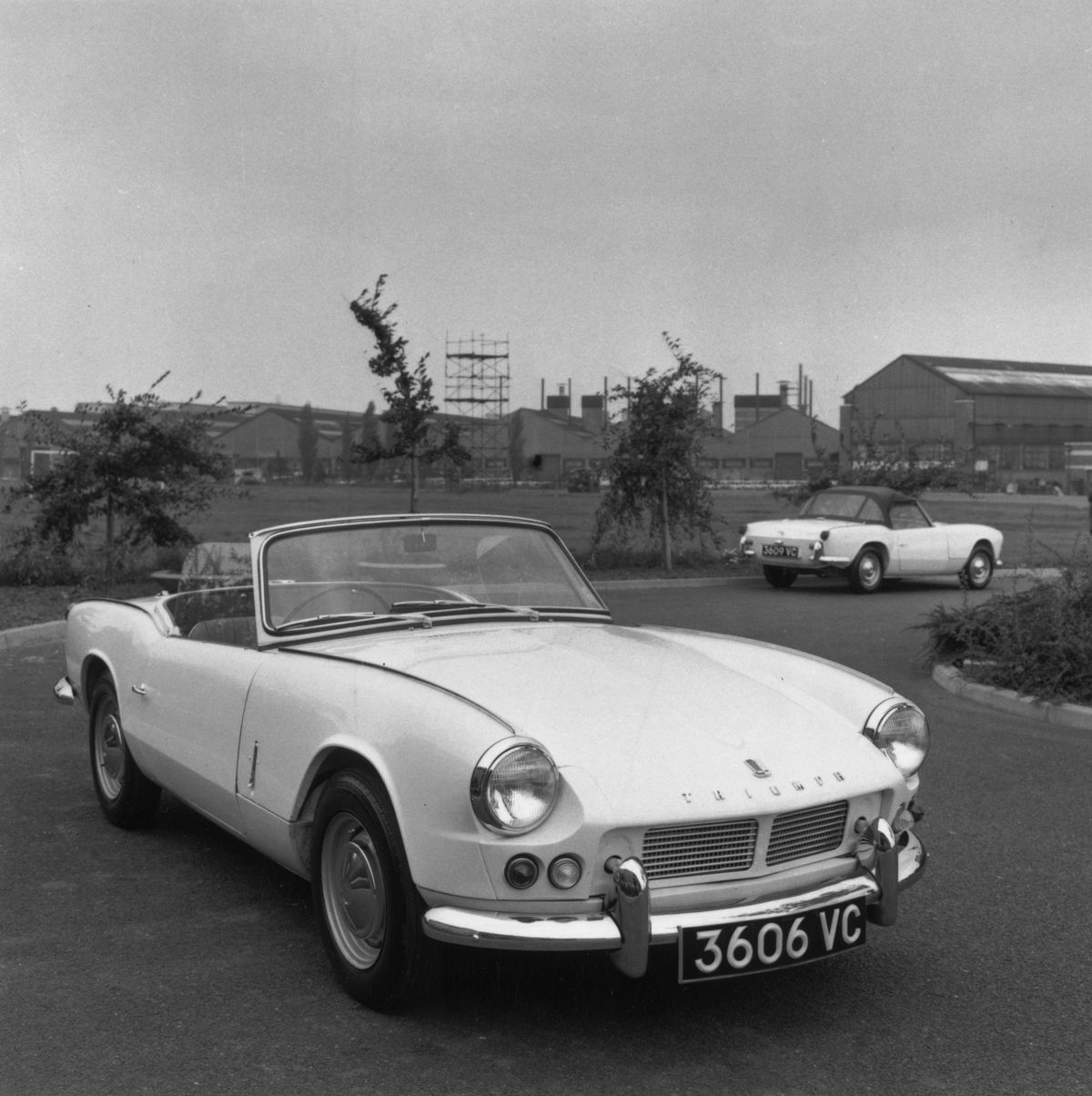
Due to financial problems, the motorcycle part of the business was sold in 1936 and remains a completely separate company to this day. Triumph's car business revived after World War II and produced some of the finest British roadsters and sports cars of its day. TR2, TR3, Spitfire, TR6, TR7 are iconic British roadsters, but they were not enough to keep the brand alive in the long run.
The next brand collapsed during the Great Depression.
Willys-Overland Motors
Willys-Overland as a company began in 1908 when John Willis purchased Overland Automotive. For the first two decades of the 20th century, Willys-Overland was the second largest automobile manufacturer in the US, after Ford. The Willys' first big success came at the start of World War II, when they designed and built the Jeep.
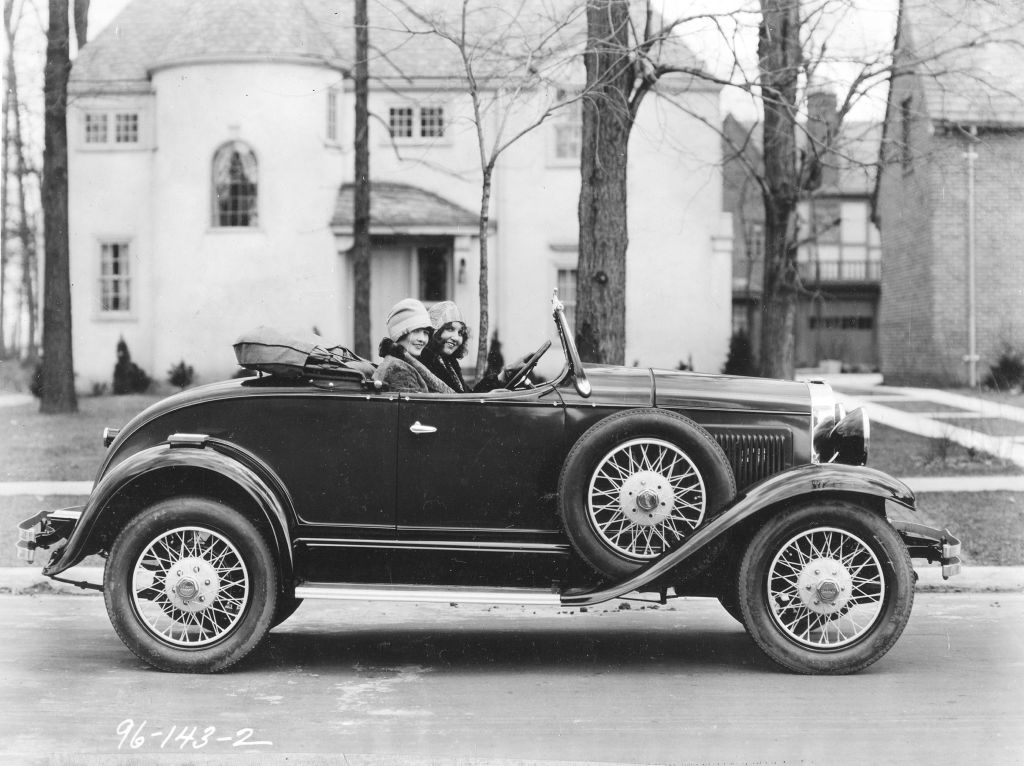
The Willys Coupe, another hit, was a popular choice among drag racers and proved to be very successful in NHRA competition. Willys-Overland was eventually sold to American Motors Corporation (AMC). AMC was bought by Chrysler, and the legendary Jeep that proved so successful for the company is still in production today.
Oldsmobile
Oldsmobile, founded by Ransome E. Olds, was a pioneering automotive company that developed the first mass-produced car and established the first automotive assembly line. Oldsmobile had only been around for 11 years as a stand-alone company when General Motors acquired it in 1908. Oldsmobile continued to innovate and became the first manufacturer to offer a fully automatic transmission in 1940. In 1962 they introduced the Turbo Jetfire engine, the first production turbocharged engine.

Some of the most famous Oldsmobile vehicles include the 442 muscle car, the Vista Cruiser station wagon, the Toronado, and the Cutlass. Unfortunately, the brand lost its vision in the 1990s and early 2000s, and in 2004 GM ceased to exist.
Stanley Motor Carriage Company
In 1897, the first steam car was built by twins Francis Stanley and Freelan Stanley. Over the next three years, they built and sold over 200 vehicles, making them the most successful U.S. automaker at the time. In 1902, the twins sold the rights to their first steam-powered cars to compete with Locomobile, which continued to make cars until 1922. In the same year, the Stanley Motor Carriage Company was officially founded.

Fun fact: In 1906, Stanley's steam-powered car set the world record for the fastest mile in 28.2 seconds at 127 mph. No other steam-powered car could break this record until 2009. Stanley Motors went out of business in 1924 as gasoline-powered cars became much more efficient and easier to operate.
Aerocar International
We all dreamed of a flying car, but it was Moulton Taylor who made that dream come true in 1949. On the road, the Aerocar towed detachable wings, a tail, and a propeller. It worked as a front-wheel drive car and could reach speeds of up to 60 miles per hour. In the air, the maximum speed was 110 mph with a range of 300 miles and a maximum altitude of 12,000 feet.

Aerocar International was unable to get enough orders to put their flying car into serious production, and only six were ever built. All six are either in museums or private collections and most of them are still able to fly.
B.S. Cunningham Company
All American components, racing pedigree and European-inspired styling make BS Cunningham Company cars incredibly fast, well built and lust worthy. Founded by Briggs Cunningham, a wealthy entrepreneur who raced sports cars and yachts, the goal was to create American-made sports cars that could compete with the best cars in Europe both on the road and on the track.
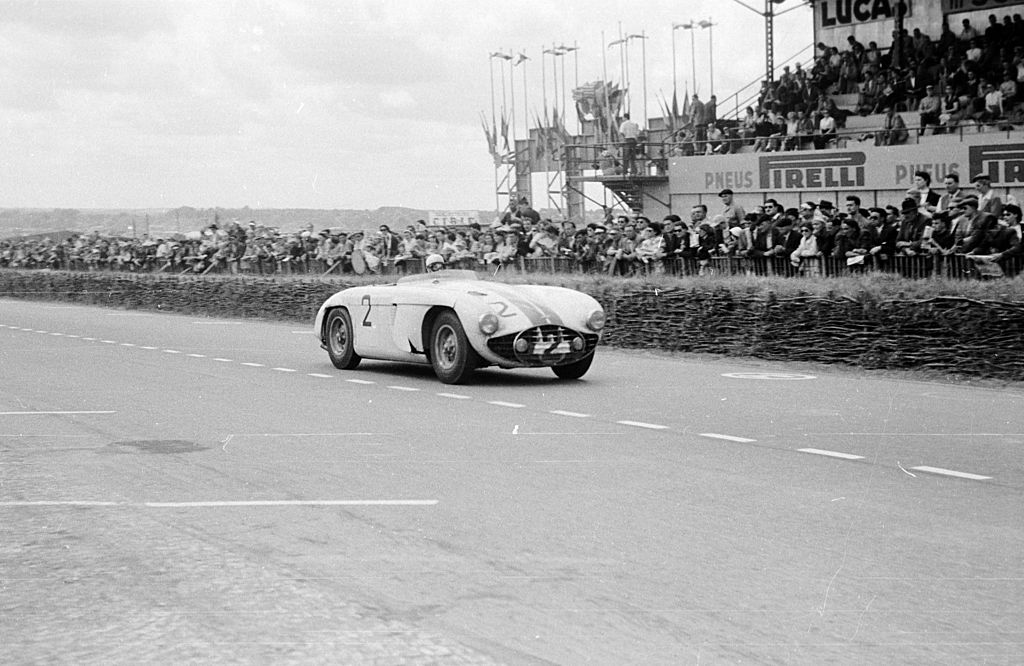
The first cars produced by the company were the dedicated C2-R and C4-R racing cars in 1951 and 1952. Then came the elegant C3, which was also a racing car, but adapted for street use. The last car, the C6-R racing car, was produced in 1955 and because the company produced so few cars it was unable to continue production after 1955.
Excalibur
Styled after the Mercedes-Benz SSK and built on a Studebaker chassis, the Excalibur was a lightweight retro sports car that debuted in 1964. Renowned industrial and automotive designer Brooks Stevens, at the time working for Studebaker, designed the car but ran into financial trouble. at Studebaker meant that the supply of engines and running gear had to come from somewhere else.

A deal was made with GM to use a Corvette 327cc V8 with 300 horsepower. Considering the car only weighed 2100 pounds, the Excalibur was fast enough. All 3,500 cars built were made in Milwaukee, Wisconsin, and the retro style car continued until 1986, when the company collapsed.
Offspring
Toyota's sub-brand, Scion, was originally conceived to attract a younger generation of car buyers. The brand emphasized styling, inexpensive and unique vehicles, and relied heavily on guerrilla and viral marketing tactics. An appropriate name for the company, as the word Scion means "descendant of a noble family."
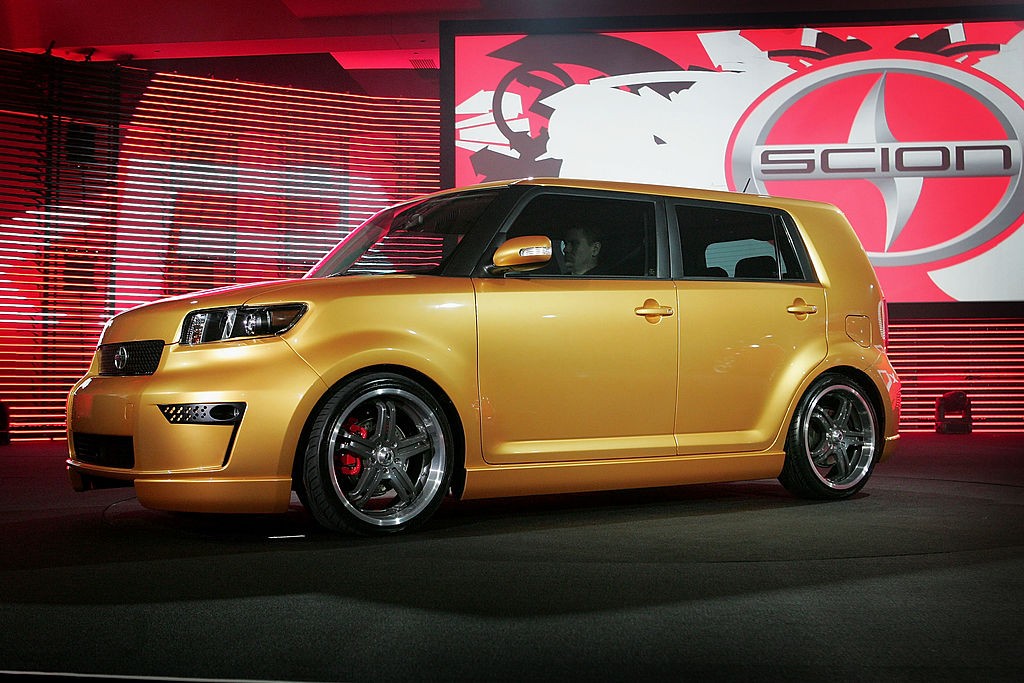
The youth brand was first launched in 2003 with the xA and xB models. Then came the tC, xD, and finally the great FR-S sports car. The cars shared engines, transmissions and chassis with most of the Toyota brand and were mostly based on either the Yaris or the Corolla. The brand was again taken over by Toyota in 2016.
Autobianchi
In 1955, the bicycle and motorcycle manufacturer Bianchi merged with the tire company Pirelli and the automaker Fiat to form Autobianchi. The company produced exclusively small subcompact cars and was a testing ground for Fiat to explore new designs and concepts such as fiberglass bodies and front-wheel drive.

The A112, introduced in 1969, remains the most famous car produced by Autobianchi. Production continued until 1986, and the small hatchback was valued for its good handling, and in the Abarth Performance trim, it became an excellent rally and hill climb racer. The success of the A112 Abarth led to a one-man championship in which many of Italy's renowned rally drivers honed their skills.
mercury
The Mercury brand, created in 1938 by Edsel Ford, was a division of the Ford Motor Company intended to sit between the Ford and Lincoln car lines. It was conceived as an entry-level luxury/premium brand, similar to Buick or Oldsmobile.
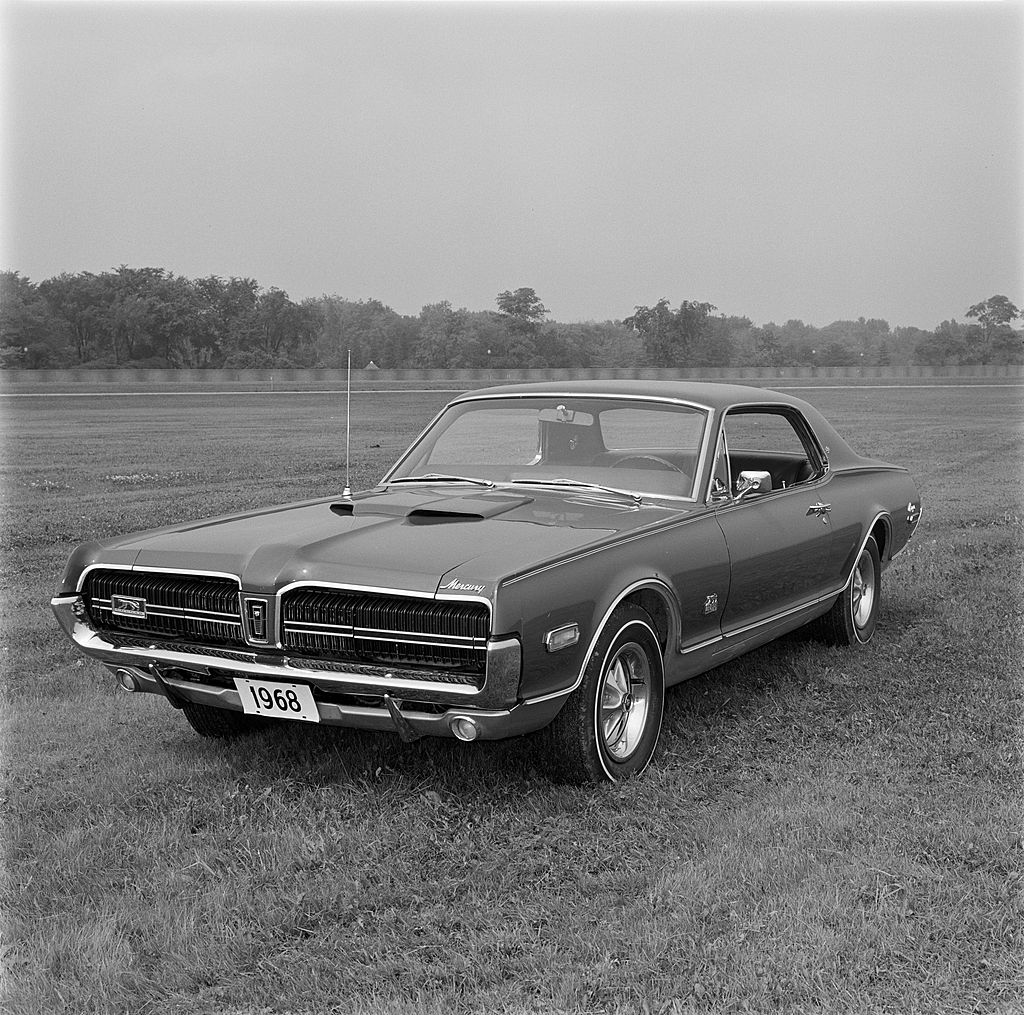
Arguably the best car ever made by Mercury was the 1949CM Series 9. A classic elegant coupe or sedan, it has become a hot-rodding favorite and icon. It is also notable for being the car driven by James Dean's character. Riot without reason. The Cougar and Marauder were also great vehicles made by Mercury, but brand identity issues in the 2000s caused Ford to discontinue the Mercury in 2010.
Panhard
The French car manufacturer Panhard began operations in 1887 and was one of the first car manufacturers in the world. The company, then known as Panhard et Levassor, was a pioneer in automotive design and set many of the standards for cars that are still in use today.
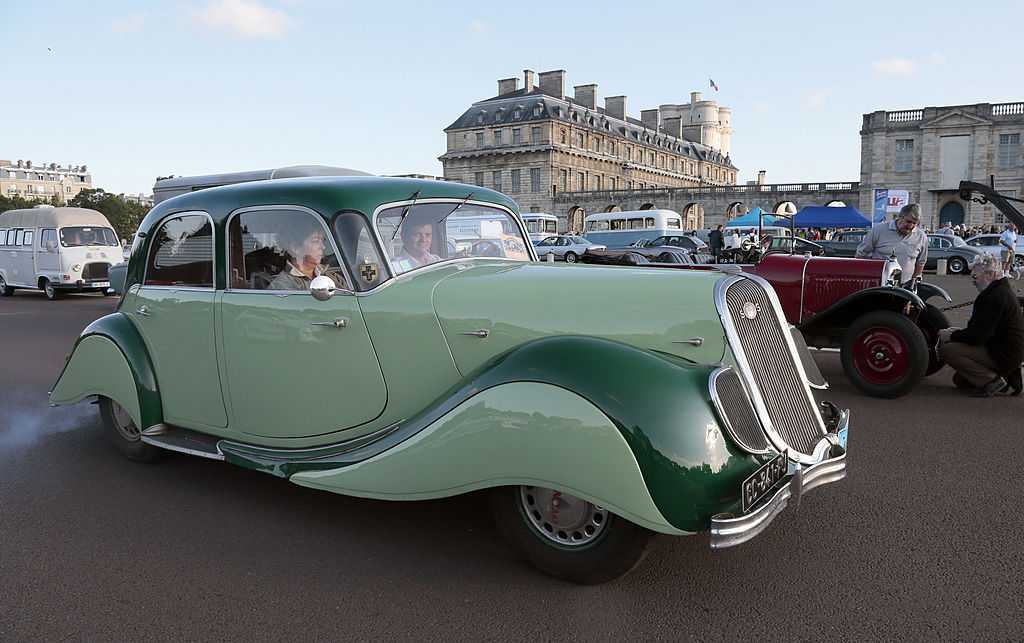
The Panhard was the first car to offer a clutch pedal to operate the gearbox and standardized on a rear wheel drive front engine. The Panhard Rod, a conventional rear suspension, was invented by the company. This reference is still used today on modern cars and in NASCAR stock cars which refer to them as trackbars.
Plymouth
Plymouth was introduced in 1928 by Chrysler as an inexpensive car brand. The 1960s and 1970s were a golden age for Plymouth as they played a big role in muscle car racing, drag racing and stock car racing with models like the GTX, Barracuda, Road Runner, Fury, Duster and the ridiculously cool Super bird. .

Plymouth tried to reclaim its former glory in the late 1990s with the Plymouth Prowler but failed as the car had the looks but not the retro hot rod characteristics that inspired its design. The brand was officially discontinued in 2001.
Saturn
Saturn, "a different kind of car company," as their slogan says, was founded in 1985 by a group of former GM executives. The idea was to create an entirely new way of making and selling cars, with a focus on small sedans and coupes. Despite being a subsidiary of GM, the company was largely separate.

In 1990, the first Saturn car, the SL2, was released. With their futuristic design and impact-absorbing plastic body panels, the first Saturns received many positive reviews and looked like legitimate rivals to Honda and Toyota. However, GM constantly diluted the brand with the development of badges, and in 2010 Saturn went bankrupt.
Double Gia
Often a flame that burns twice as bright burns twice as long, and this was the case with Dual-Ghia, since the company was founded in 1956 but only lasted until 1958. Dual-Motors and Carrozzeria Ghia have teamed up to create a luxury sports car with a Dodge chassis and V8 engine with body made in Italy by Ghia.

These were cars for the stylish, the rich and the famous. Frank Sinatra, Desi Arnaz, Dean Martin, Richard Nixon, Ronald Reagan and Lyndon Johnson had one. A total of 117 cars were produced, 60 of which are believed to still exist and still exude 60s style from every angle.
Corporation Checker Motors
Checker Motors Corporation is known for its iconic yellow cabs that ruled the streets of New York. Founded in 1922, the company was a combination of Commonwealth Motors and Markin Automobile Body. During the 1920s, the company also gradually acquired Checker Taxi.

The famous yellow cab, the Checker A series, was first introduced in 1959. The styling remained largely unchanged until it was discontinued in 1982. A number of engines were installed during the production run, with the latest cars receiving GM V8 engines. Checker also made taxi-styled consumer vehicles and commercial vehicles. In 2010, the company went out of business after years of struggling to make a profit.
American Motors Corporation
American Motors Corporation (AMC) was formed from the merger of Nash-Kelvinator Corporation and Hudson Motor Car Company in 1954. The inability to compete with the Big Three and problems with Renault's French owner led Chrysler to buy AMC in 1987. The company was taken over. at Chrysler, but its legacy and cars remain relevant to this day.

AMC made some great cars in their time, the AMX, Javelin and Rebel were fantastic muscle cars, the Pacer was famous for Wayne world, The Jeep CJ (Wrangler), Cherokee and Grand Cherokee have become icons in the off-road world.
buzzer
Hummer is a brand of rugged, all-terrain off-road trucks that AM General began selling in 1992. In fact, these trucks were civilian versions of the military HMMWV or Humvee. In 1998, GM acquired the brand and launched a civilian version of the Humvee called the H1. It had all the outstanding off-road capabilities of a military vehicle, but with a much more civilized interior.
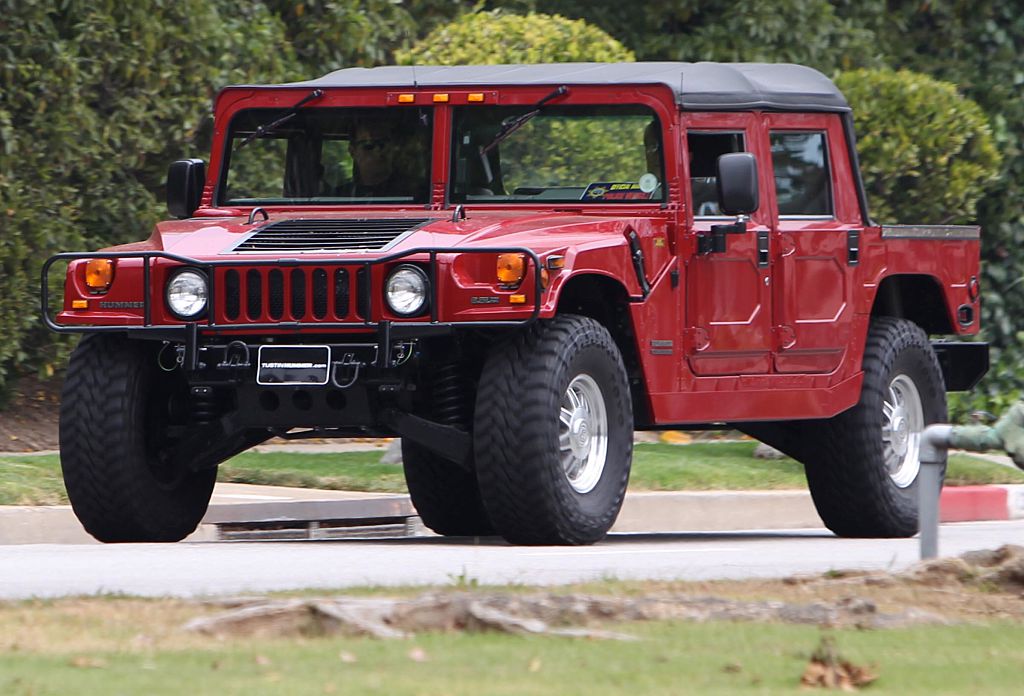
Hummer then released the H2, H2T, H3 and H3T models. These models were largely based on GM trucks. When GM filed for bankruptcy in 2009, they hoped to sell the Hummer brand, but there were no buyers and the brand was discontinued in 2010.
Pirate
Rover first started as a bicycle manufacturer in England in 1878. In 1904, the company expanded its production of automobiles and continued to operate until 2005, when the brand was discontinued. Before being sold to Leyland Motors in 1967, Rover had a reputation for producing high quality, high performance vehicles. In 1948 they introduced the Land Rover to the world.
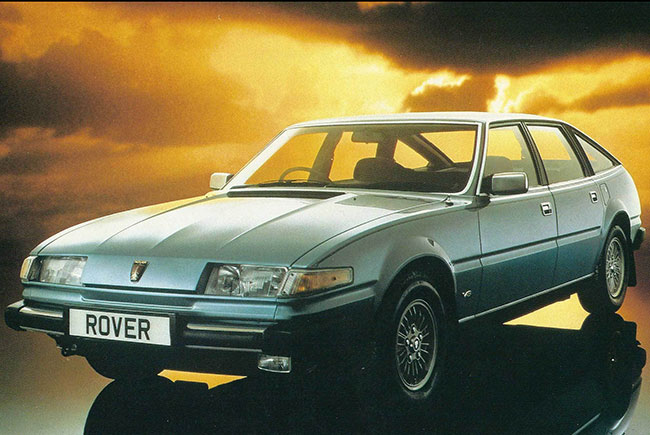
A capable and rugged truck that quickly became synonymous with off-road ability. The Land Rover Range Rover was introduced in 1970 and the rest, as they say, is history. Rover also had success with the SD1 sedan. Styled as a four-door version of the Ferrari Daytona, it also found success on the racetrack in Group A racing.
Delorean Motor Company
Few automobiles and car companies have a history as dramatic and tumultuous as the DeLorean Motor Company. Founded in 1975 by renowned engineer and automotive executive John DeLorean, car, company and person are caught up in a saga involving the US Securities and Exchange Commission, the FBI, the British government and possible drug trafficking.
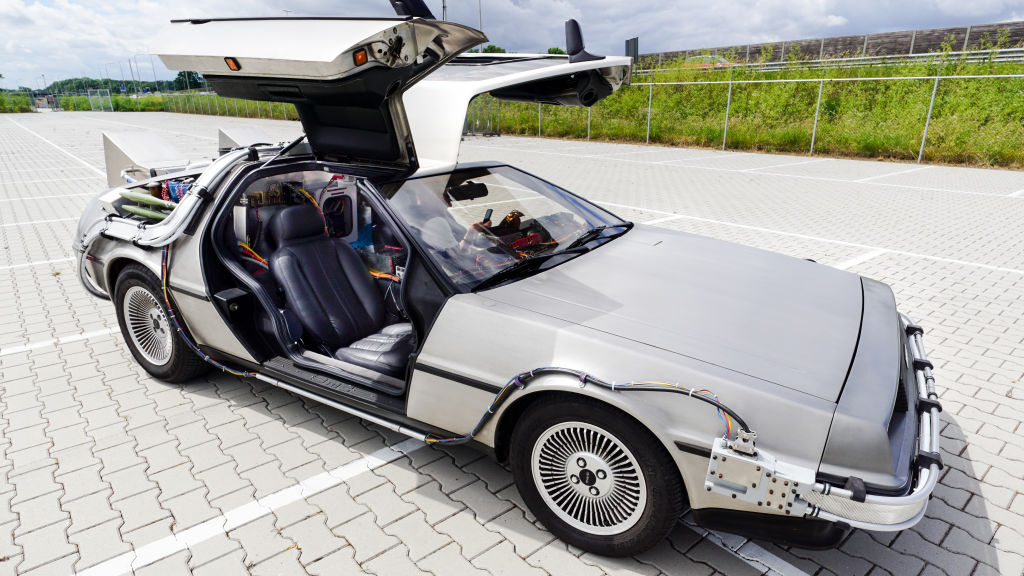
The car, manufactured by DMC DeLorean, was a coupe with a stainless steel body, gullwing doors, and a mid-engined layout. Power came from a woefully inadequate PRV V6 with a staggeringly low output of 130 horsepower. The company went bankrupt in 1982, but the film Back to the Future, in 1985 there was a resurgence of interest in the unique car and company.
Mosler
Warren Mosler, an economist, hedge fund founder, engineer and aspiring politician, started building high-performance sports cars in 1985. The name of the company at the time was Consulier Industries and their first car, the Consulier GTP, was a lightweight, incredibly fast mid-engined sports car that would go on to dominate IMSA road racing for six years.
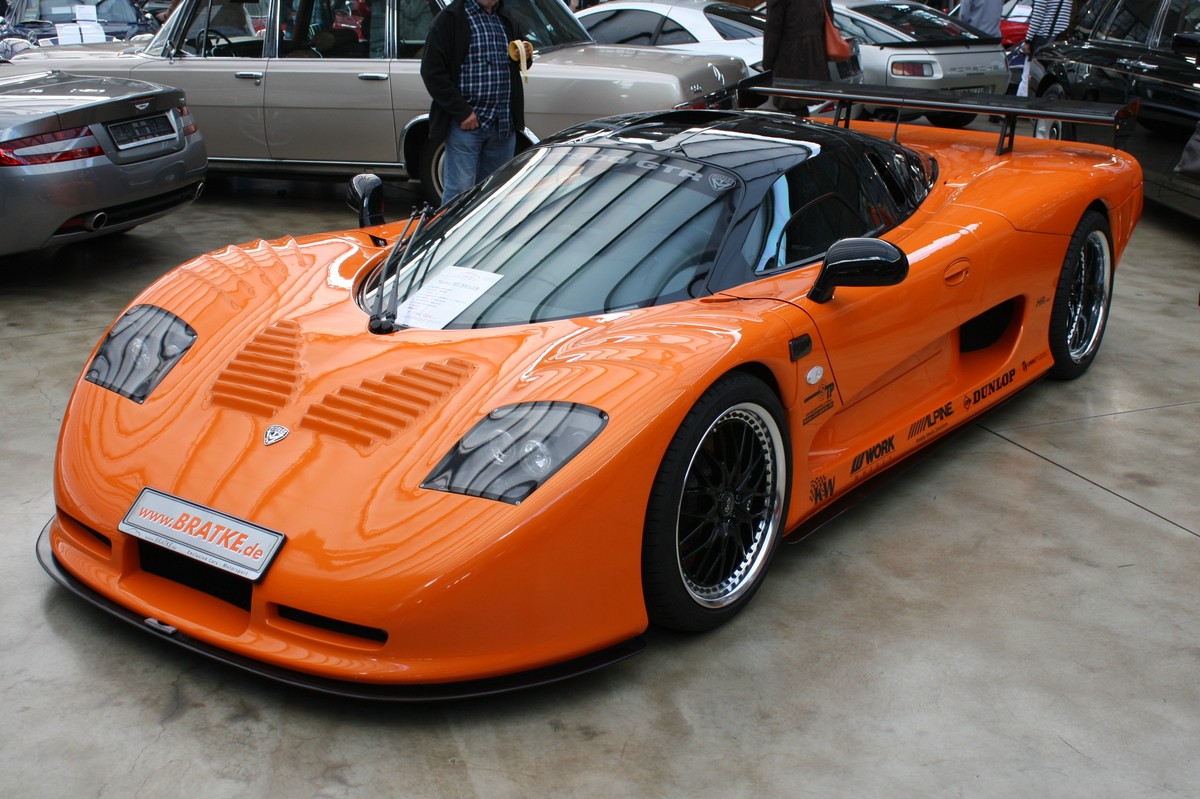
Consulier Industries was renamed Mosler Automotive in 1993. The company built a continuation of the GTP called the Mosler Intruder, powered by a Corvette LT1 V8 engine. Raptor appeared in 1997, but the real hit was the MT900, which debuted in 2001. Unfortunately, Mosler ceased to exist in 2013, but their cars are still successfully raced all over the world.
Amphicar
Is it a car for water or a boat for the road? Either way, Amphicar is capable of handling both land and sea. Designed by Hans Tripel and built in West Germany by the Quandt Group, production of the amphibious vehicle or roadboat began in 1960 and made its public debut at the 1961 New York Auto Show.
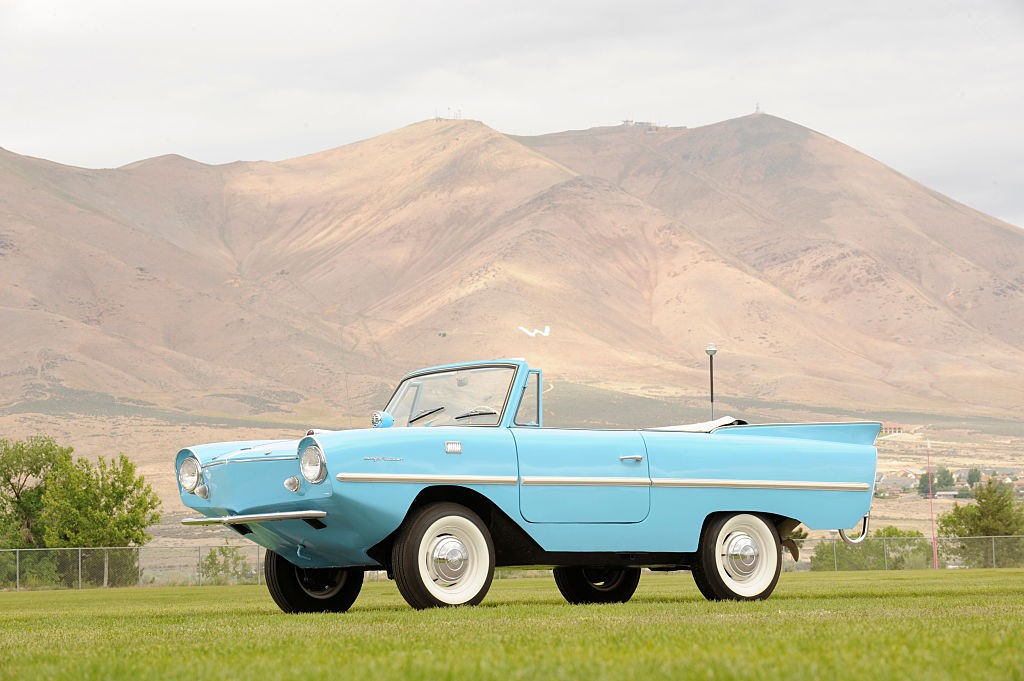
Officially called the Amphicar Model 770, it was known to be “not a very good car and not a very good boat, but it works great. We like to think of it as the fastest car on the water and the fastest boat on the road." The Amphicar, powered by a Triumph four-cylinder engine, was produced until 1965, with the last of the cars sold in 1968.
Askari Kars LLC.
British sports car manufacturer Ascari was founded by Dutch entrepreneur Klaas Zwart in 1995. Zwart had been racing sports cars for many years and decided to try his hand at building them. The first car, the Ecosse, was developed with the help of Noble Automotive, but it was the KZ1 that came out in 2003 that caught the eye.
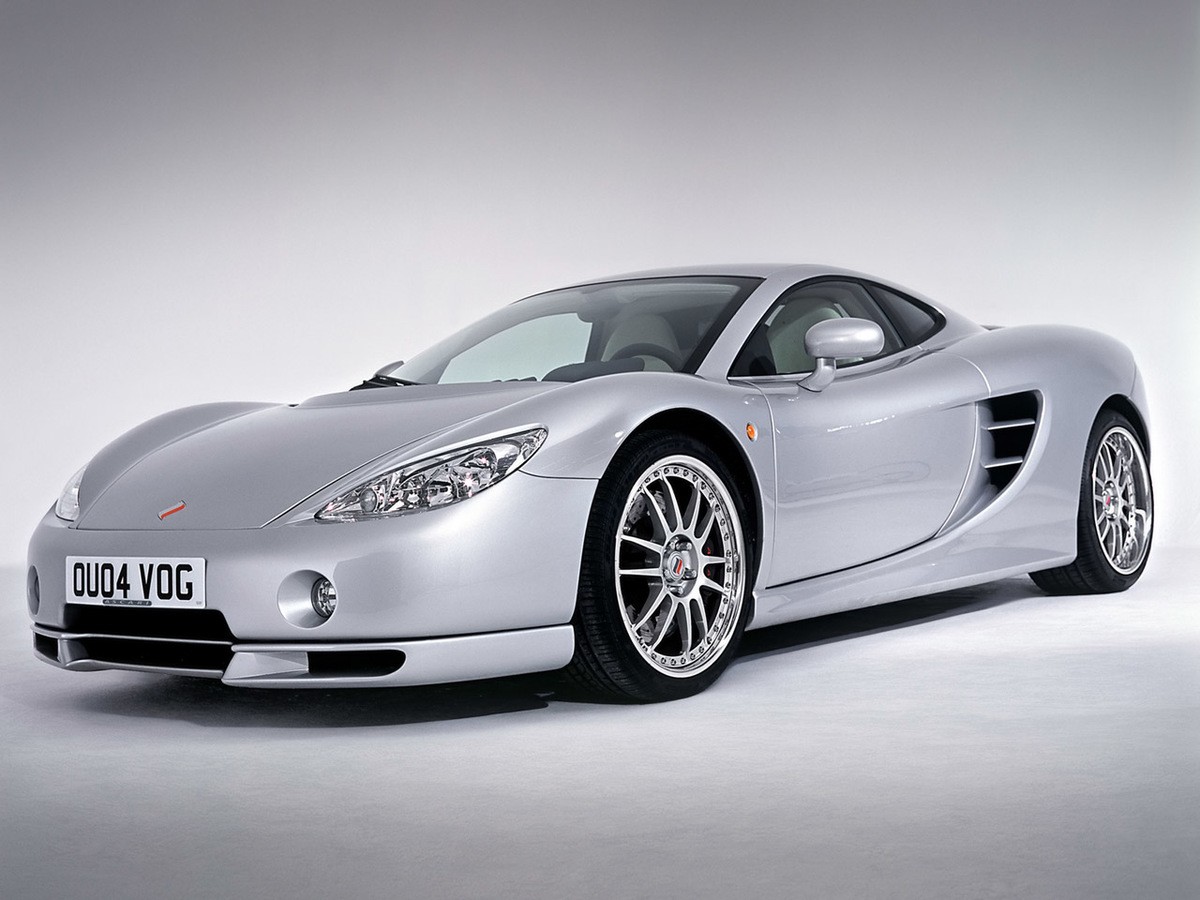
Named after the famous Italian racing driver Alberto Ascari, the cars produced were mid-engined, extremely fast, very loud and race track oriented. Ascari Cars has regularly competed in sports car racing, endurance racing and even raced at the 24 Hours of Le Mans. Unfortunately, the company went bankrupt in 2010 and the factory where the cars were made is now occupied by the American Formula One team Haas.
Cars Cars
In the late 1980s, Ferrari dealer Claudio Zampolli and music producer Gorgio Moroder came together to create a unique supercar designed by legendary stylist Marcello Gandini. The design is similar to the Lamborghini Diablo, also designed by Gandini, but has a truly epic 6.0-liter V16 engine. Seventeen cars were produced before the company closed in Italy and moved to Los Angeles, California.
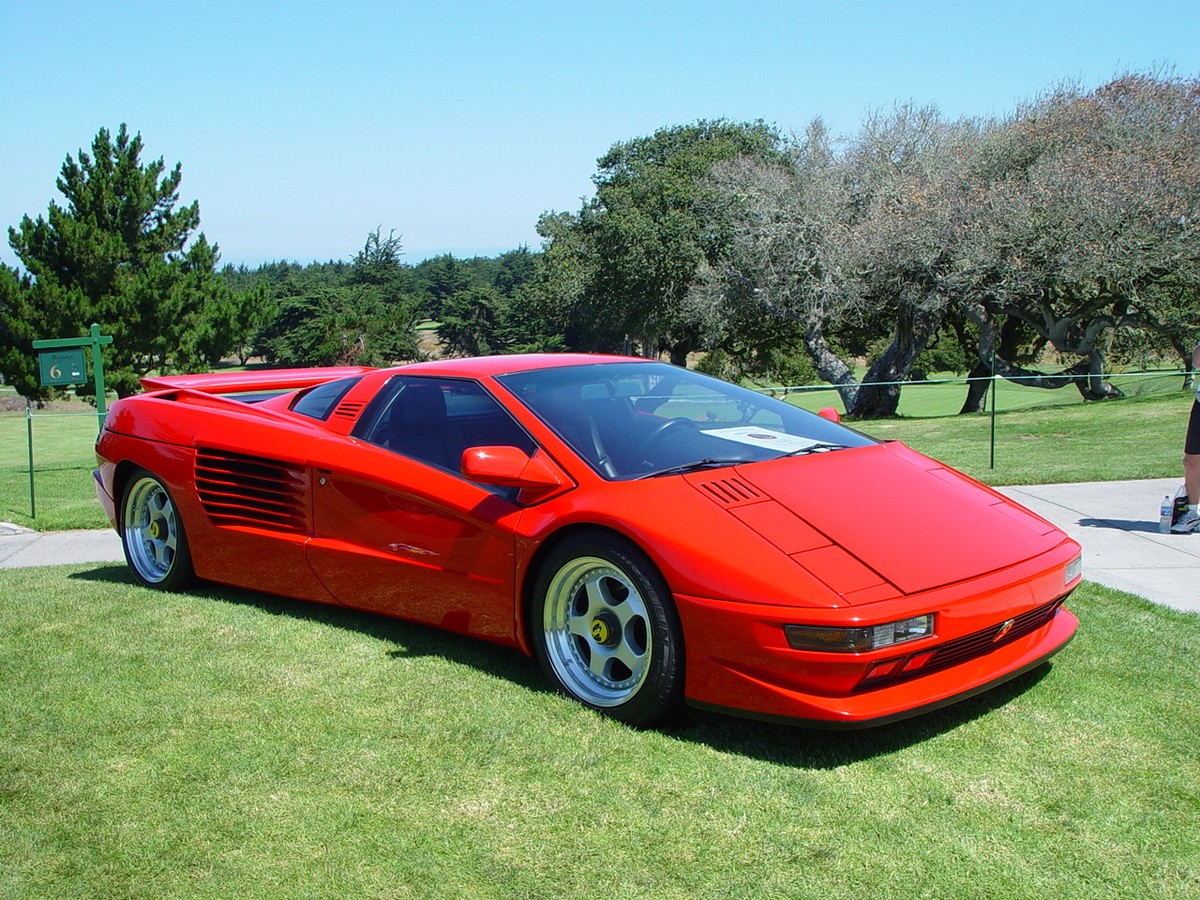
The amazing engine was a real V16 with a single-cylinder block that used four cylinder heads based on the Lamborghini Urraco flat V8. The engine produced over 450 horsepower and could reach a top speed of the V16T up to 204 mph.
Cisitalia
After World War II, sports car racing and Grand Prix were dominated by Italian manufacturers and teams. It was the era of Alfa Romeo, Maserati, Ferrari and Cisitalia based in Turin. Cisitalia, founded by Piero Dusio in 1946, began producing racing cars for Grand Prix racing. The D46 proved successful and eventually led to a partnership with Porsche.
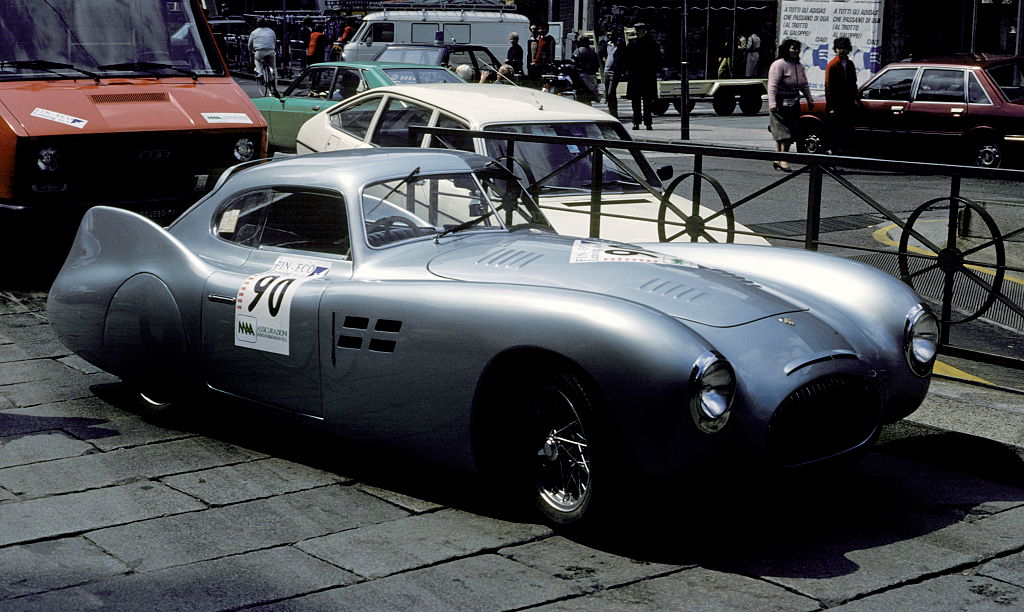
GT cars are what Cisitalia is best known for. Often referred to as "rolling sculptures", Cisitalia cars combined Italian style, performance and comfort to rival anything else on the roads of the day. While Ferrari was finding its footing, Cisitalia was already a master. The company went bankrupt in 1963 and today its cars are in high demand.
Pontiac
Pontiac was introduced as a trademark in 1926 by General Motors. It was originally intended to be inexpensive and partner with the also defunct Oakland brand. The name Pontiac comes from the famous Ottawa chief who resisted the British occupation of Michigan and waged war against the fort in Detroit. The city of Pontiac, Michigan, where Pontiac cars were made, is also named after the chief.

In the 1960s, Pontiac abandoned its reputation as a cheap car manufacturer and reinvented itself as a performance-oriented car company. Without a doubt, the most famous car was the GTO. Other famous cars were the Firebird, Trans-Am, Fiero and the infamous Aztek..
